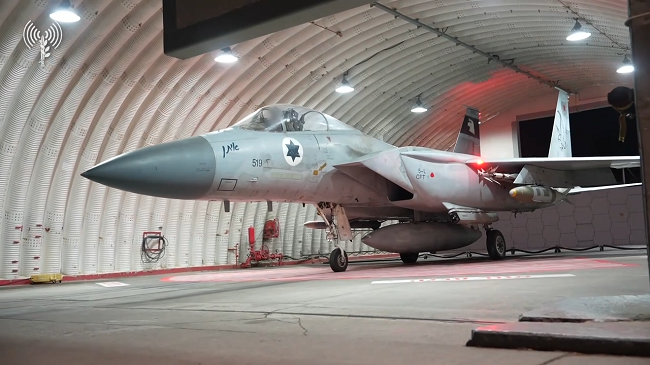
Last night’s Israeli strike was preceded by a series of SEAD/DEAD operations conducted by Mossad and special forces inside Iranian territory—employing loitering munitions and/or SPIKE missiles—in coordination with IAF air assaults. The objective was to neutralize the country’s principal western air-defense sites and systems (radars and SAM batteries SA-69, SA-68, SA-71, and SA-63, according to the IAF) and to disable several launch-ready ballistic missiles.
At that point, roughly 200 combat aircraft—including F-35I ADIR, F-15I, F-15A/C (equipped with ELL-8222 ECM pods), F-16I, and F-16C—launched over 330 munitions in 4–5 successive waves against about 100 targets spanning nuclear-program facilities, military bases, missile sites, and targeted assassinations of military personnel and nuclear scientists. These munitions ranged from JDAMs (among them GBU-31(V)1 2,000-lb bombs—some reportedly fitted with BLU-109 Bunker Buster warheads—and GBU-39/B Small Diameter Bombs) to, it appears, air-launched ballistic missiles. It is also likely that the so-called “secret” RA-01 drone, armed with DELILAH loitering missiles or mini-cruise WIND DEMON munitions, was employed.
Known Strikes on Nuclear Sites
- Natanz enrichment complex: At least six strikes hit the underground halls housing centrifuges (two large caverns of 23,000 m² and 32,000 m² located 8–23 m below ground) and the adjacent power substation transformers.
- Arak heavy-water plant: Status unclear—no confirmed hits.
- Fordow, Isfahan, Bushehr: No reported attacks on these sites.
Known Strikes on Military Targets
- Missile base near Kermanshan: Four distinct strikes.
- Base at Tabriz: Multiple hits on the base and nearby infrastructure.
- Base at Ilam and base near Piranshahr: Both struck, with secondary explosions observed.
- Tehran: At least 10strikes against 8separate targets—mainly in the city’s eastern sector—focused on IRGC personnel and nuclear-program scientists.
High-Value Eliminations Confirmed fatalities include:
- Gen. Mohammad Bagheri, Chief of Staff of the Armed Forces
- Gen. Hossein Salami, IRGC Commander-in-Chief (succeeded by Gen. Pakpour, per Khamenei’s appointment)
- Gholam Ali Rashid, head of Khatam al-Anbia Construction & Oil & Gas (IRGC-controlled)
- Ali Shamkhani, Khamenei adviser and member of the Expediency Discernment Council
According to Israeli Defense Minister Yoav Katz, senior IRGC Air Force leadership—among them Gen. Amir Ali Hajizadeh (Chief of Staff), the UAV Force Commander, and the Air Defense Commander—were struck while in a bunker command center. At least five nuclear scientists were also killed: Fereydoon Abbasi, Mohammad Mehdi Tehranchi, Ahmad Reza Zolfaghari, Amir Hossein Feqhi, and Abdolhamid Minoucher.
Iranian Retaliatory Response
Tehran launched 100–150 Shahed-136 drones toward Israel, all intercepted by the Israeli Air Force, the Royal Jordanian Air Force (which reported also engaging missiles), and the U.S. Air Force (deployed with F-15E Strike Eagles armed with APKWS II pods at Muwaffaq Salti Air Base). The Royal Air Force appears not to have participated. Interceptions occurred over Jordanian, Iraqi, Syrian—and reportedly Saudi—airspace; a USAF KC-707 tanker refueled IAF F-16s during these operations.
Subsequent Strikes Breaking news indicates a fresh wave of assaults against the Tabriz base (with secondary explosions), Kermanshan, and Shiraz. Explosions were also reported near Khorramabad (another missile base) and Hamadan (site of an IRIAF facility).








.png)
